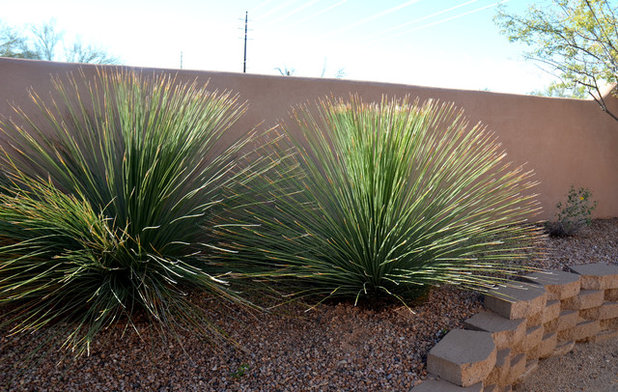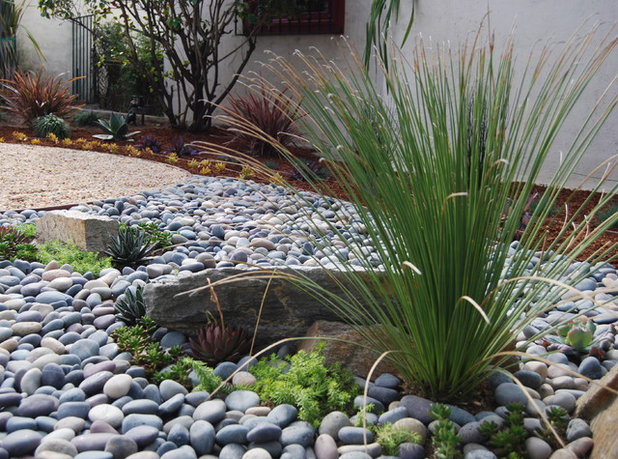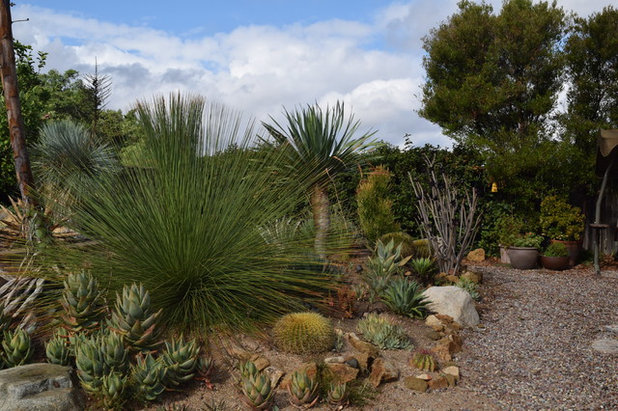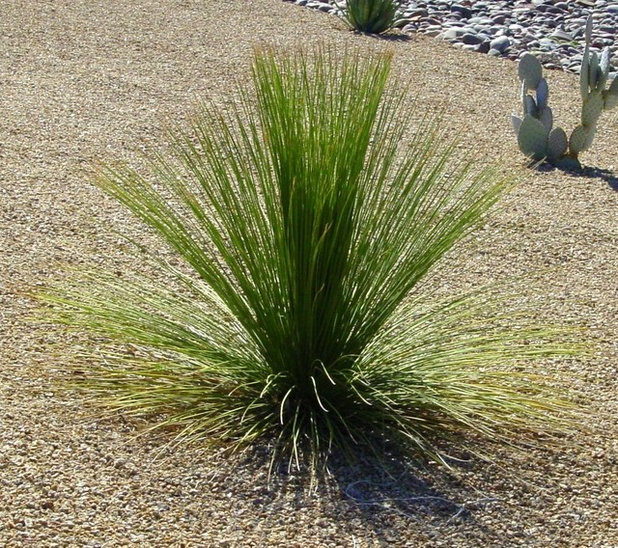Mexican grass tree (
Dasylirion quadrangulatum), like most accent plants, provides striking interest in the garden. Its long, narrow leaves fan out in a spherical shape, adding welcome texture to the drought-tolerant garden.
Mexican grass tree also shines because it’s able to thrive in hot, dry summers and cool winters with little supplemental water. Its leaves’ bright green color visually cools the landscape, especially when it is planted alongside plants with blue-gray foliage.

Noelle Johnson Landscape Consulting
Botanical name: Dasylirion quadrangulatum (syn.
Dasyilirion longissimum)
Common names: Mexican grass tree, toothless desert spoon, toothless sotol
Origin: Native to the northeastern region of Mexico, including Coahuila, Tamaulipas and San Luis Potosi
Where it will grow: Hardy to 15 degrees Fahrenheit, or minus 9 degrees Celsius (USDA Zone 8; find your zone)
Water requirement: Low
Light requirement: Full sun for best appearance, although can tolerate filtered shade
Mature size: 5 to 10 feet tall and 5 feet wide; the flowering stalk can reach up to 12 feet tall
Benefits and tolerances: Extremely drought-tolerant once established; water once a month in May through September; in low-desert gardens, water twice a month in summer and monthly in winter
Seasonal interest: A tall flowering spike can appear in spring or summer several years after planting
When to plant: Early spring and fall

BlueGreen Landscape Design
Distinguishing traits. Mexican grass tree’s most distinct feature is its finely textured evergreen foliage. The leaves are ¼ inch wide and extend out 3 feet. The leaves grow outward from a central trunk that grows slowly up to 10 feet tall. While the tips of the green leaves may turn brown at the edges, the variation simply adds to the plant’s ornamental effect. Its appearance is similar to that of Texas desert spoon (
Dasylirion texanum)
. The main difference between the two is that Texas desert spoon has a slightly wider leaf with small “teeth” along the edges, while the leaves of Mexican grass tree are smooth along the margins.
Mature plants can produce a 10- to 12-foot-tall stalk with cream-colored flowers in late spring into summer. The stalk can be removed once the flowers become dry. Interestingly, Mexican grass tree doesn’t flower every year.

Nick Martin Landscape Architect Inc.
How to use it. This Mexican native shines when planted singly. Its leaves arch gracefully outward, creating a rounded, spiky element in the landscape that contrasts beautifully with columnar cactuses, such as the saguaro cactus (
Carnegiea gigantea). Pair it with the smaller beavertail prickly pear (
Opuntia basilaris) or the uniquely shaped succulent
resin spurge (
Euphorbia resinifera).
Mexican grass tree lends itself to a contemporary garden design when planted in rows or used as a centerpiece surrounded by smaller succulents, such as ‘Blue Elf’ aloe (
Aloe ‘Blue Elf’)
or golden barrel cactus (
Echinocactus grusonii).
This accent plant also makes a great container plant and is an ideal choice for areas that receive full sun and reflected heat, where flowering plants may struggle. If you’re growing Mexican grass tree in a container, be sure to use a fast-draining planting mix that is specially formulated for succulents. It’s important to note that when grown in a container, Mexican grass tree will need to be watered more often — weekly in summer, every two weeks in spring and fall, and monthly in winter.

Noelle Johnson Landscape Consulting
Planting notes. Mexican grass tree has simple needs. Provide well-drained soil and a sunny spot to keep it happy and looking its best for years to come. No pruning is needed, but many choose to prune away the lower leaves to create a more refined appearance.





